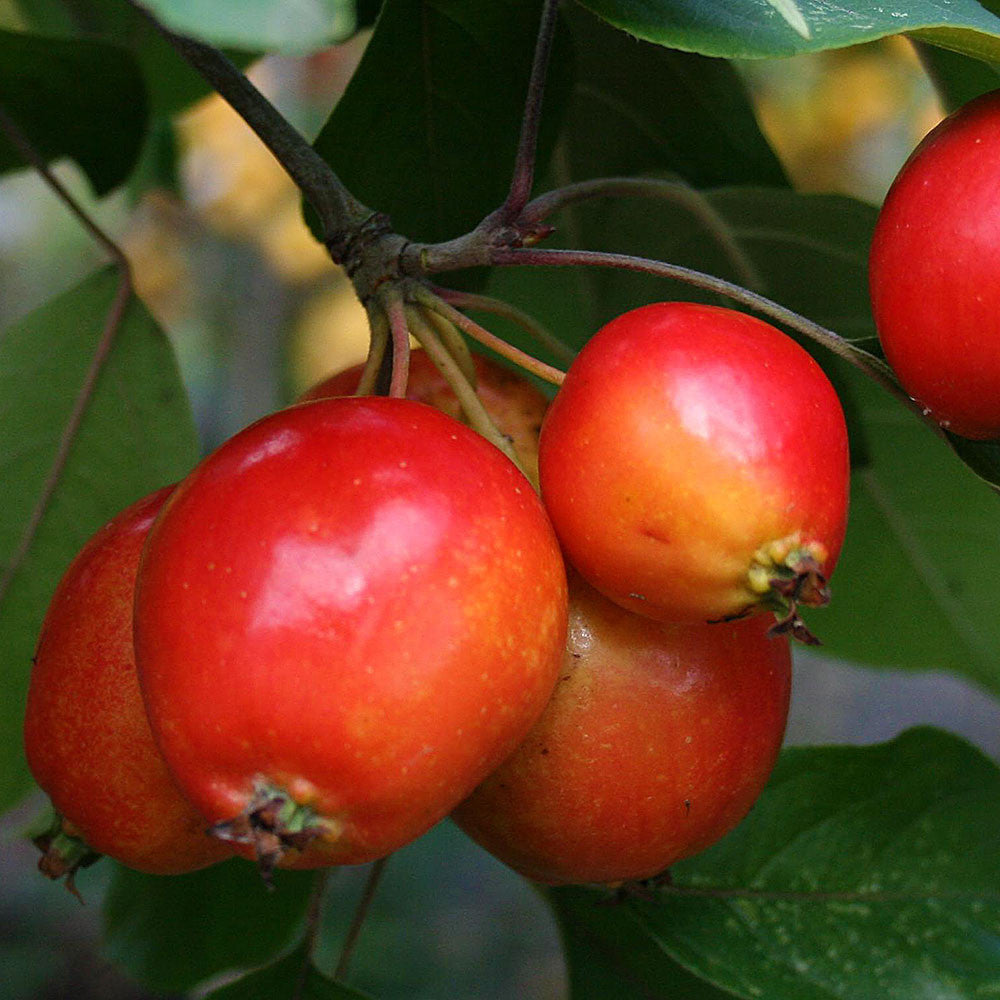

Watch our video on how to plant a tree for full instructions. When you dig the soil over, remove stones and other rubbish and mix in well rotted compost or manure down to the depth of about 2 spades. Kill the weeds first: for tough weeds like nettles, brambles and ground elder, you will usually need a glyphosate based weed-killer to get rid of them. Prepare your site before planting: It is good to dig over the site where you plant a tree several months in advance. They won't grow in deep shade and may struggle in very poor dry soil. Although a moist, well drained site is ideal, crabapples like heavy clay and don't mind a bit of waterlogging in winter. They tolerate shade well, although we recommend planting them in full sun to get the best display of flowers and fruit. Notes on planting Malus John Downie: Crabapples are tough plants that thrive in any moderately fertile soil.

On average, standard trees are 2-3.5 metres tall when they arrive, but we cannot tell you precisely how tall your trees will be before we deliver them. This measurement makes no difference to the tree's final height. So, a 6/8cm standard tree has a trunk with a circumference of 6-8cm and an 8/10 standard has a trunk 8-10cm around. Unlike sapling trees and hedge plants, standards aren't measured by their height, which will vary quite a bit both between and within species. Standard trees are measured by their girth in centimetres 1 metre above ground level: their trunk's waist measurement. This tree was bred in the 1870's by Edward Holmes in Lichfield and named after his friend, a Scottish nurseryman who worked at Handsworth Nurseries in Sheffield. Tip for harvesting: The ripe fruit drop easily from the tree, so as soon as you see one fall, put a tarp on the ground and shake the tree. It is one of the best pollinators for apple orchards, along with Golden Hornet. Suitable for large containers designed for trees. Bright red-orange fruitĪny well drained soil.


 0 kommentar(er)
0 kommentar(er)
